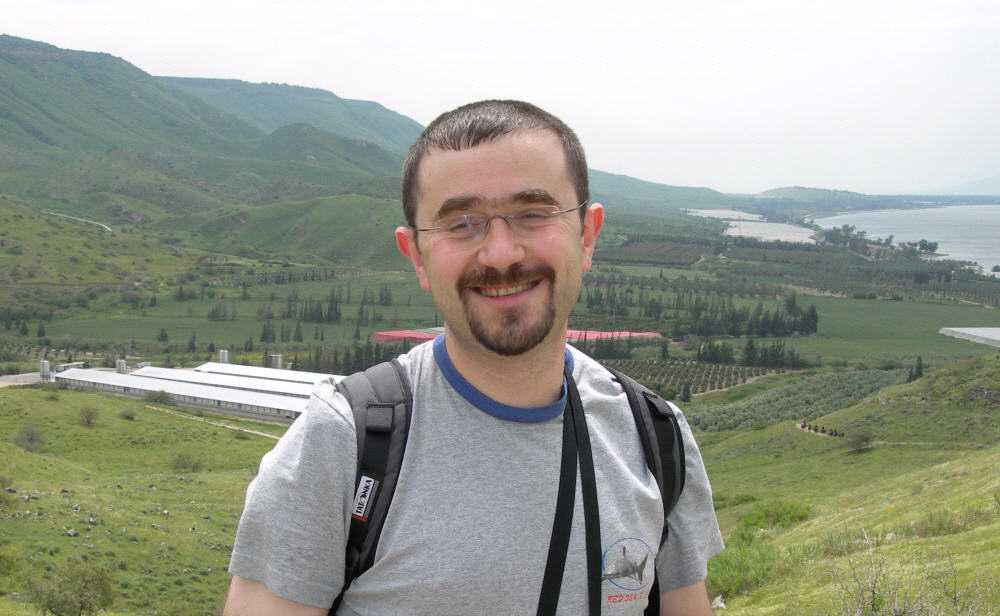 |
  |
| |
|

|
I was born in the city of Kishinev, frm USSR, in 1974 and immigrated to Israel with my parents at the age of 13. Earned a B.Sc. in Mathematics and Computer Science (with distinction in both majors) from the Tel-Aviv University in 2000. |
After working for several years as a software engineer at the R&D dpt. of Nice systems ltd., I've decided to pursue a life-long dream and started my studies towards an MD degree at the Hebrew University and Hadassah medical school in 2002. Immediately after the beginning of my studies I've joined the laboratory of Professor Hagai Bergman, at first as a programmer wirting software for the experiments performed in the laboratory. Later on I've begun my PhD research project under the supervision of Professor Bergman as a part of the MD-PhD program at the medical school.
My research project focuses on Parkinson's disease (PD), which is characterized by non-motor and motor symptoms, with the latter group including mainly rigidity, tremor and bradykinesia. While synchronized neuronal oscillations in the basal ganglia (BG) of PD patients and in the primary motor area (M1) of the cerebral cortex and the BG of 1-methyl-4-phenyl-1,2,3,6-tetrahydropyridine (MPTP) treated primates have been demonstrated by electrophysiological recordings, their role as the neuronal correlate of PD motor symptoms has been challenged. A family of techniques, collectively labeled as Deep Brain Stimulation (DBS), has been used for treatment of tremulous disorders, first and foremost PD. DBS for PD is performed at various sites, in particular the Vim nucleus of the thalamus, the Globus Pallidus internal segment (GPi) and the Sub-Thalamic nucleus (STN). Several studies have argued that the clinical alleviation of PD symptoms provided by DBS is achieved by the disruption of the abnormally synchronized oscillatory activity in the cortico-basal ganglia-thalamo-cortical (CBTC) loops.
It is my intent to elucidate the existence and the direction of the causal relationship between the oscillatory activity in the CBTC loops and the cardinal positive motor symptoms of PD: rigidity and tremor. These experiments will be performed in two main parts:
1. The role of sensory feedback in the neuronal activity of M1 arm related area and the GP. I intend to record both from these structures and the muscle activity (EMG) while applying artificial forced oscillations to the contralateral arm in 2 main regimes: discrete frequencies and sweeps, latter allowing scanning of the entire frequency range of the forced oscillations. This series of experiments will establish the connectivity between the periphery (muscles and joints) and the BG&M1 in both time and frequency domains, thus completing a previous study performed in our lab, assessing the connectivity between these structures in the opposite direction.
2. Closed loop DBS. I intend to perform DBS targeted both at the general level of activity and specifically at the neuronal oscillations in the CTX and the GP (in separate trials), thus effectively closing a feedback loop. This will be achieved in real-time resolution using custom software running on a dedicated Digital Signal Processing (DSP) chip. In order to asses the effectiveness of each of the stimulation paradigms, I intend to construct an automatic rigidity measuring device and develop methods for its signal analysis. Results of the closed loop sessions will be compared to open loop sessions, also performed in several regimes: standard DBS (high-frequency single pulse), low-frequency single pulse, artificial oscillatory bursts designed to mimic the oscillatory activity in PD and stimulation according to a recording made from an MPTP-treated primate in our lab.
Successful completion of the above tasks may lead to better understanding of BG physiology, PD pathophysiology and shed some light on the mechanisms by which DBS alleviates the motor symptoms of PD. In addition, if our working hypotheses regarding the causes of PD motor symptoms will prove to be correct, the experiments might lead to the development of a new strategy for DBS treatment of PD and other neurological disorders.
 |
|
|
 |
| |
© Copyright 2004 The Hebrew university of Jerusalem. All Rights Reserved. Last update: 16/05/06 by basic concept | |